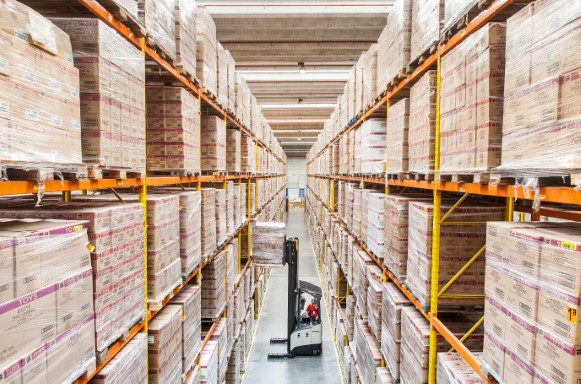Pallet racking guide
What is pallet racking? Pallet racking is a structure designed for the efficient and organised storage of goods on pallets. These units make the most of the vertical space…
On February 5, 2024

What is pallet racking? Pallet racking is a structure designed for the efficient and organised storage of goods on pallets. These units make the most of the vertical space…
On February 5, 2024
Pallet racking is a structure designed for the efficient and organised storage of goods on pallets. These units make the most of the vertical space in a warehouse, facilitating logistics management and optimising accessibility to products. Manufactured with resistant materials, pallet racking offers a robust and versatile solution, adapting to different load sizes and weights. Their use is essential in logistics environments to ensure efficient distribution and smooth product flow, improving productivity and reducing handling times. At FM Logistic – a global logistics operator, we understand the importance of these racks in the supply chain, providing comprehensive solutions to optimise inventory management and guarantee an exceptional logistics and warehousing service.
Pallet racking consists of several key components that work together to provide an efficient storage solution. These include:
These horizontal elements are crucial for supporting the pallets, distributing the weight efficiently throughout the racking. Their design usually allows for easy placement and removal of pallets, facilitating inventory management.
Forming the backbone of the racking, these vertical pillars provide the necessary robustness to support considerable loads. Their height influences the overall storage capacity, and the uniform arrangement ensures an even distribution of the load.
Essential links that connect the uprights and stiles, the connectors ensure the structural integrity of the racking. This precise connection is key to maintaining the stability and strength of the entire system, ensuring safe and efficient storage.
The ability to adjust the height of the beams allows the racking to adapt to different pallet or product sizes. This flexibility is essential to optimise storage space and accommodate goods of different dimensions.
These additional elements provide additional stability to the racking, ensuring that the load is evenly distributed and minimising the possibility of deformation or collapse. They are key components in ensuring the durability and safety of the storage system.
The choice of pallet racking depends on a number of key factors that need to be carefully considered. Here are some important points to keep in mind when making that decision:
Evaluate the characteristics of your products, such as size, shape and weight. For example, cantilever racks are ideal for long products, while selective racks are versatile for different types.
If your products have a high turnover, selective shelving offers direct access, while for products with lower turnover, push-back or drive-in shelving may be more efficient.
Determine the amount of space available and the need to maximise storage density. Drive-in or push-back racking are effective options for high density.
If you handle products with expiry dates, push-back shelving or dynamic systems facilitate automatic rotation and management based on the expiry date.
For selective access to each pallet, selective shelving is ideal. If you prefer to access in batches and maximise space, consider systems such as drive-in or push-back.
Evaluate how often and how products are handled. If you need constant and quick access, selective shelving is a solid choice.
Anticipate possible changes in your inventory or in the type of products you handle. Opt for systems that allow for adjustments and adaptations to meet future needs.
It complies with safety and loading regulations to ensure a safe working environment and avoid potential legal issues.
By evaluating these factors together, you can make an informed decision on the type of pallet racking that best suits the specific needs of your warehouse or logistics centre.
Fill in the form